Let's talk Rottweilers
Despite their fierce reputation and large size, the Rottweiler is a loyal breed with an affectionate, obedient, and surprisingly gentle temperament. Nonetheless, their natural intelligence and powerful frame makes them one of the most popular guard dogs in the world. As a result, Rottweilers tend to do best with an experienced owner who can take on the role of ‘pack leader.’
Official name: Rottweiler
Other names: Rottie, Rottweiler Metzgerhund, Butcher’s Dog of Rottweil
Origins: Germany
Drooling tendencies
2 out of 5Grooming needs
1 out of 5Shedding Level
3 out of 5Barking tendencies
3 out of 5Energy level*
5 out of 5Compatibility with other pets
3 out of 5Warm weather?
2 out of 5Cold weather?
3 out of 5Suited to apartment living
1 out of 5Can stay alone
2 out of 5Family pet?*
3 out of 5
| Male | Female |
|---|---|
| Height | Height |
| 61 - 69 cm | 56 - 63.5 cm |
| Weight | Weight |
| 43 - 61 kg | 36 - 45 kg |
| Life stages | |
|---|---|
| Puppy | Adult |
| 2 to 18 months | 18 months to 5 Years |
| Senior | |
| 5 to 16 years | |
| Baby | |
| Birth to 2 months | |
Drooling tendencies
2 out of 5Grooming needs
1 out of 5Shedding Level
3 out of 5Barking tendencies
3 out of 5Energy level*
5 out of 5Compatibility with other pets
3 out of 5Warm weather?
2 out of 5Cold weather?
3 out of 5Suited to apartment living
1 out of 5Can stay alone
2 out of 5Family pet?*
3 out of 5
| Male | Female |
|---|---|
| Height | Height |
| 61 - 69 cm | 56 - 63.5 cm |
| Weight | Weight |
| 43 - 61 kg | 36 - 45 kg |
| Life stages | |
|---|---|
| Puppy | Adult |
| 2 to 18 months | 18 months to 5 Years |
| Senior | |
| 5 to 16 years | |
| Baby | |
| Birth to 2 months | |
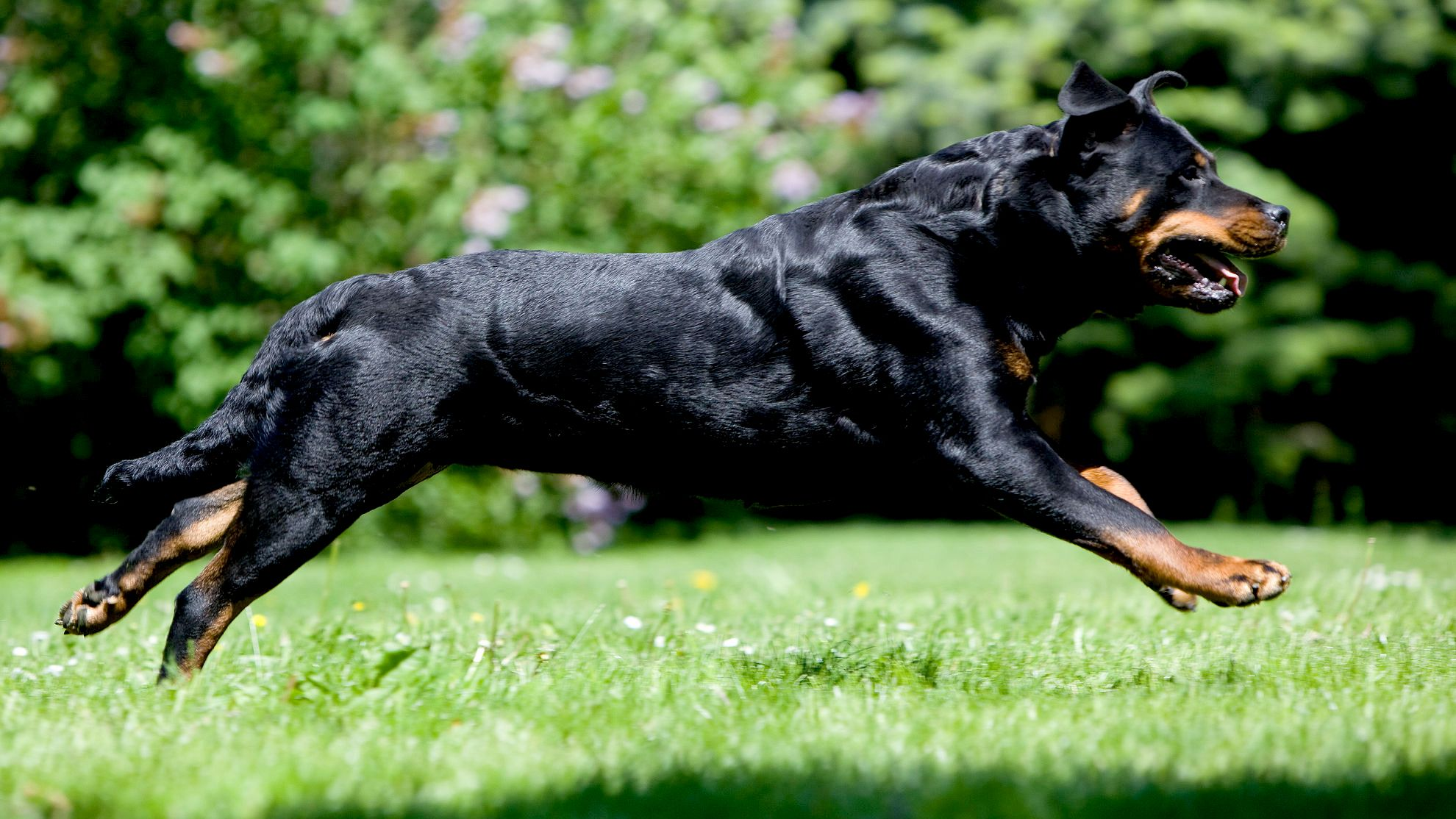
Get to know the Rottweiler
All you need to know about the breed
Naturally protective of their family, Rottweilers form very strong bonds with their human families. However, as existing owners will attest, they also have a great sense of playfulness. They enjoy snuggling with their favorite humans and will even try to sit on your lap if you let them.
As one of the oldest breeds in the world, the history of the Rottweiler dates back to Roman times when they were used for herding cattle. Today, as well as being a much-loved family pet, the Rottweiler’s powerful, bulky frame and intelligence make them excellent guard dogs.
Besides being a popular choice for police work, Rottweilers are often seen with security guards and are used as search-and-rescue dogs. Undoubtedly, this has contributed to their formidable reputation.
Rottweilers have quite an intimidating presence at first look due to them being large, muscular, and energetic. However, they are also very beautiful animals. Sporting a smooth dark coat with rust-colored flecks, they have expressive dark-brown eyes and a powerful, wagging tail.
One important thing to remember with the Rottweiler is that they need plenty of exercise. Ideally, they should have a minimum of two hours of physical activity every day. Yes, at least two hours. But as long as they get this, along with the right training and socialization, they are sure to become an integral member of your family pack.
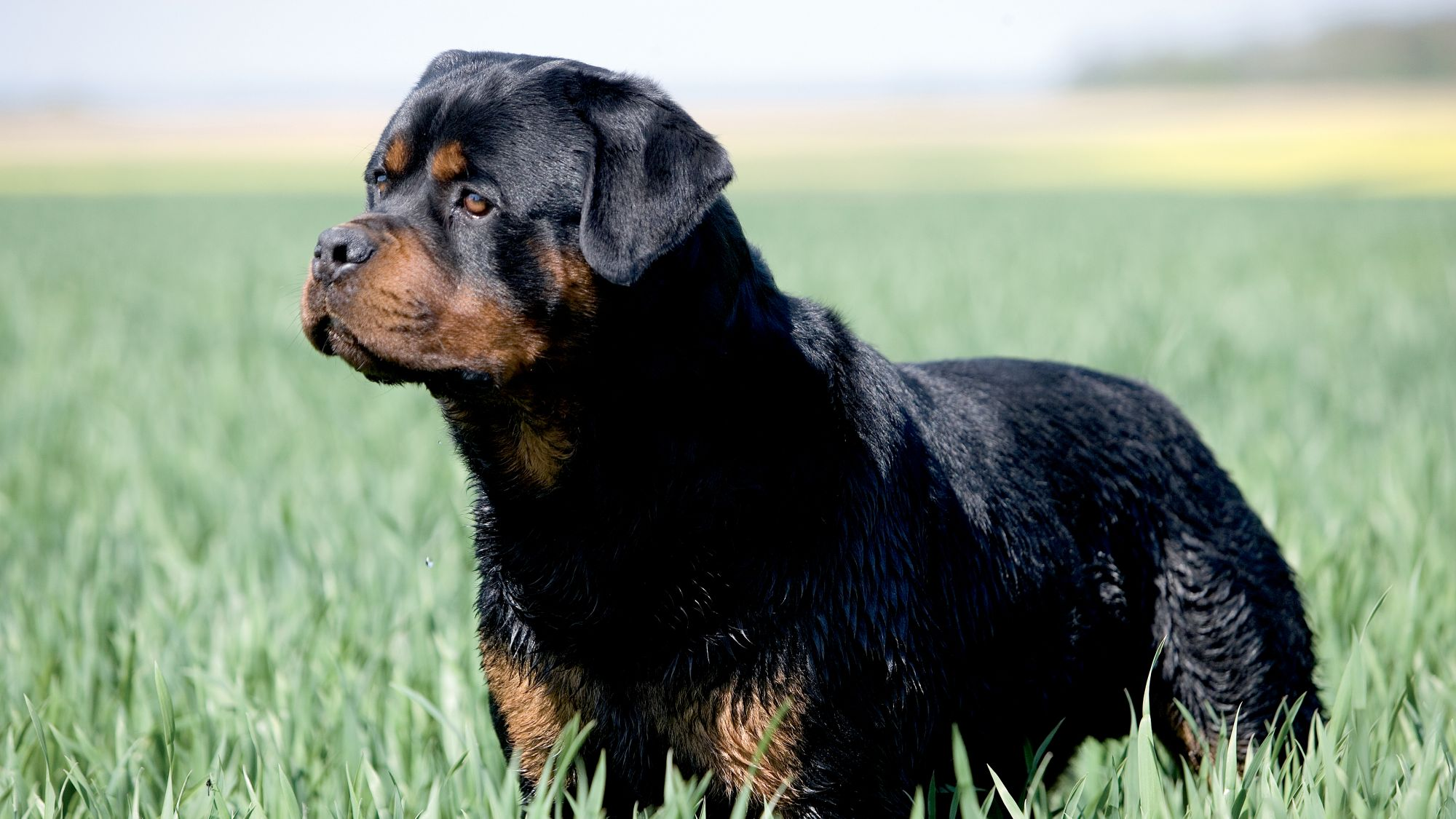
Facts about Rottweilers
1. Busting the myths
Any potentially dangerous behavior in Rottweilers usually occurs due to either a bad owner or a lack of socialization and training. Therefore, it is important to pre-plan and manage your time to adhere to crucial considerations and needs for this breed, especially given their immense strength.
2. High in demand
During the 1990s, the Rottweiler became one of the most sought-after dogs in the US and this resulted in many less than ethical breeders – leading to animals with health problems and/or a bad temperament. Therefore, it is always worth investing the time to find a respected and trusted breeder.
History of the breed
Named after the small town of Rottweil, which became a center for cattle commerce, the dogs continued their work as herding animals. They were also adopted by local butchers as dependable draught dogs and even became known as Rottweiler Metzgerhunds (butcher dogs).
In the early 1900s, Rottweilers became the favored choice for the police service, paving the way for their reputation as guard dogs. They were officially recognized by the American Kennel Club in 1931, but it wasn’t until after World War II that their popularity really took off. They also went on to become the renowned household pets that we know today.
From head to tail
Physical characteristics of Rottweilers
1.Head
2.Eyes
3.Body
4.Fur
5.Tail
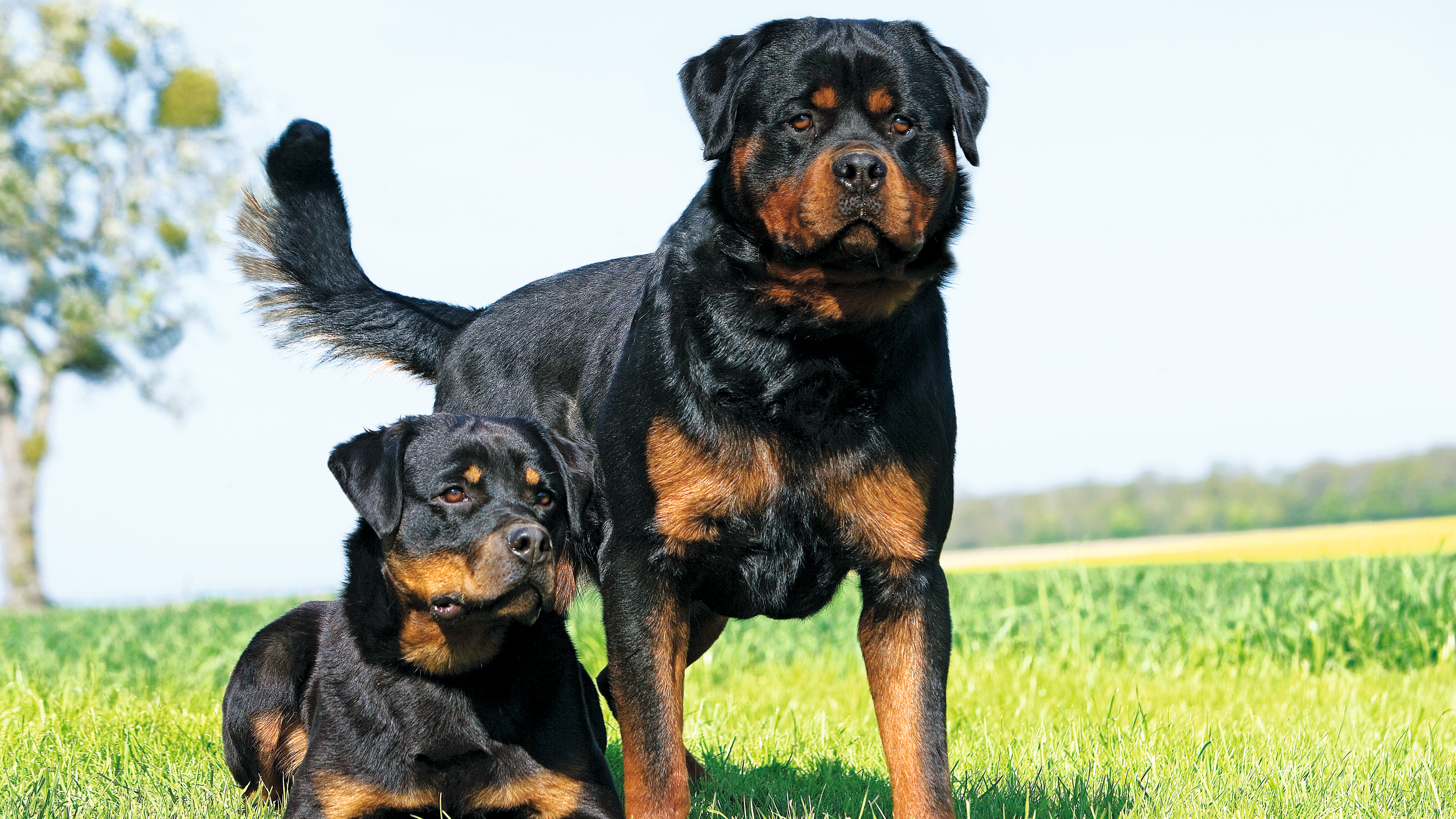
Things to look out for
From specific breed traits to a general health overview, here are some interesting facts about your Rottweiler.
Keep an eye on their physical condition
One of the most common health problems in Rottweilers is a hereditary condition called hip dysplasia—a malformation of the joint. When this occurs, dogs often show pain or lameness in one or both rear legs, though this isn't always the case. In later life, the condition can frequently lead to arthritis. However, a reputable breeder will have the hips and elbows of all parent dogs X-rayed, thereby minimizing the risk. High-quality nutrition, regular exercise, and maintaining a healthy weight can all help support healthy joints in your Rottweiler.
Prone to stomach issues
Similar to other large-breed dogs, Rottweilers can be at risk of a condition called gastric dilatation and volvulus (otherwise known as bloat/bloating). This serious condition is caused by a build-up of excess gas in the stomach. Thankfully, there are several preventative measures you can take. For example, since bloat can often be triggered by eating and/or drinking too much in one go, their food allowance should be divided into several smaller meals throughout the day. Additionally, using a specially designed bowl can help slow their eating. Importantly, your Rottweiler’s exercise should be scheduled long after mealtimes so they can digest their food properly. Symptoms of bloat can include a distended abdomen, excess salivation, and retching—so immediate treatment is vital. If you notice any of these symptoms, consult your vet right away.
Regularly check for lumps and bumps
Like all dogs, Rottweilers can sometimes develop growths or masses on their bodies. While these are often benign, such as warts, cysts, or fatty lumps, they can occasionally be mast cell tumors—a form of cancer that should be treated as soon as possible. Rottweilers can also be susceptible to a type of bone cancer called osteosarcoma, which is more common in larger dog breeds. This condition most often occurs in the shoulder, wrist, or knee area, with limping being one of the first symptoms. As always, it’s important to watch for any unexpected changes in your dog. Early detection is key, so the sooner you can get them to the vet, the better.
Tailored nutrition for Rottweillers
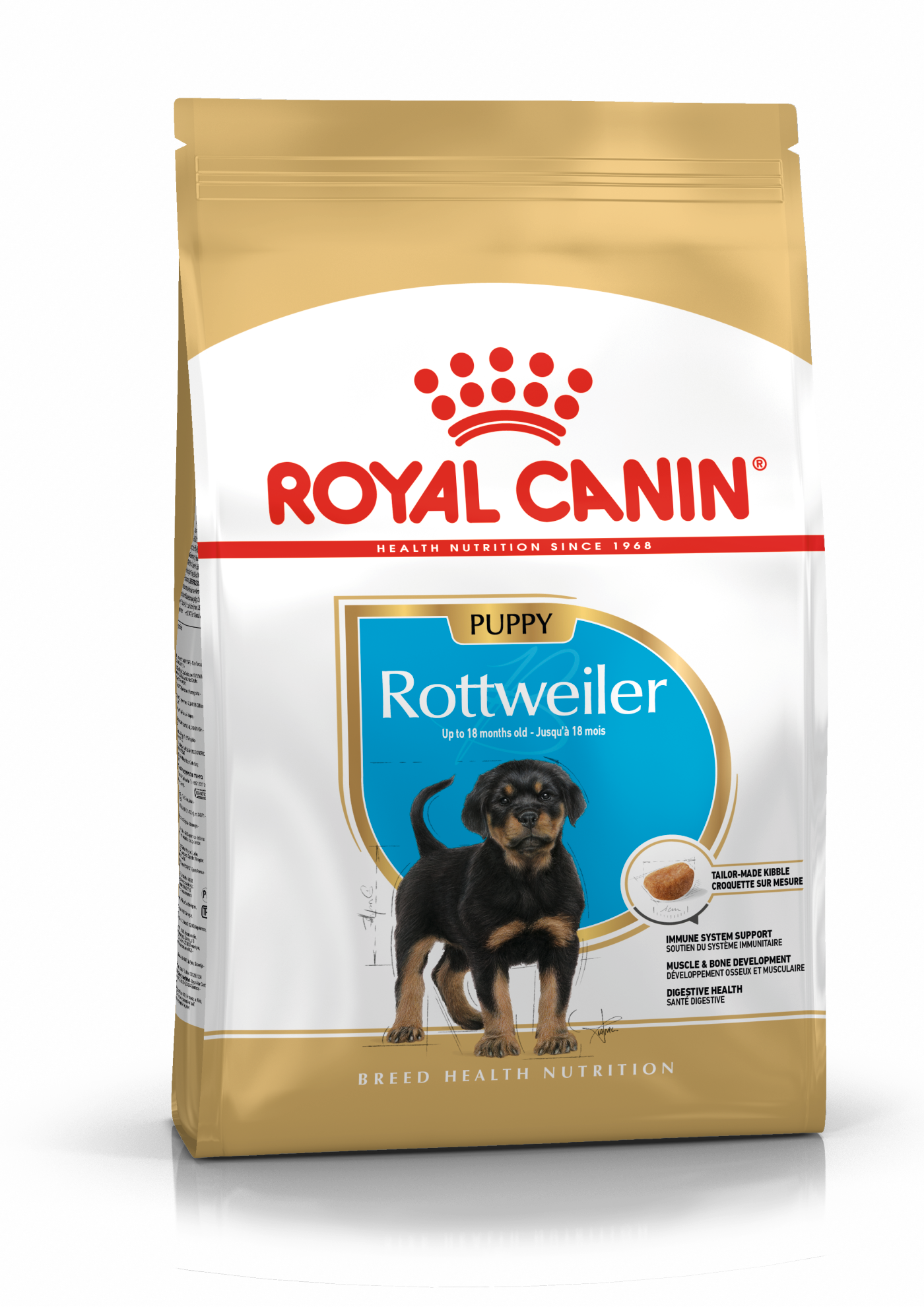
When choosing food for a Rottweiler, there are many factors to consider, including their age, lifestyle, activity level, physical condition, and any health issues or sensitivities. Food provides the energy needed for a dog’s vital functions, and a complete nutritional formula should offer a balanced mix of nutrients to avoid deficiencies or excesses, both of which could have effects on your Rottweiler's development and health.
As large breed dogs have a higher risk of a condition called gastric dilatation and volvulus (GDV), where the stomach becomes overstretched and rotated due to excess gas (bloat)—often caused by overfeeding during a single meal—it’s recommended to split the daily food allowance into three meals during puppyhood and maintain this routine into adulthood. Also, at all times but especially in hot weather and during exercise, clean, fresh water should be provided for your Rottweiler.
These recommendations are for healthy animals. If your dog has health issues, please consult your veterinarian, who may recommend a specialized veterinary diet.
Immune System Support
As puppies develop, they will experience many changes. As the immune system gradually develops during this stage the formula helps their natural defenses with a exclusive complex of antioxidants (including Vitamin E).
Muscle & Bone Development
Rottweilers experience a long growth period that requires a precise amount of energy to maintain a healthy weight. Also, there are optimal levels of protein, calcium and phosphorus to support muscle and bone development.
Digestive Health
Formulated with high-quality protein and prebiotics to support digestive health and a balanced intestinal flora, contributing to good stool quality.
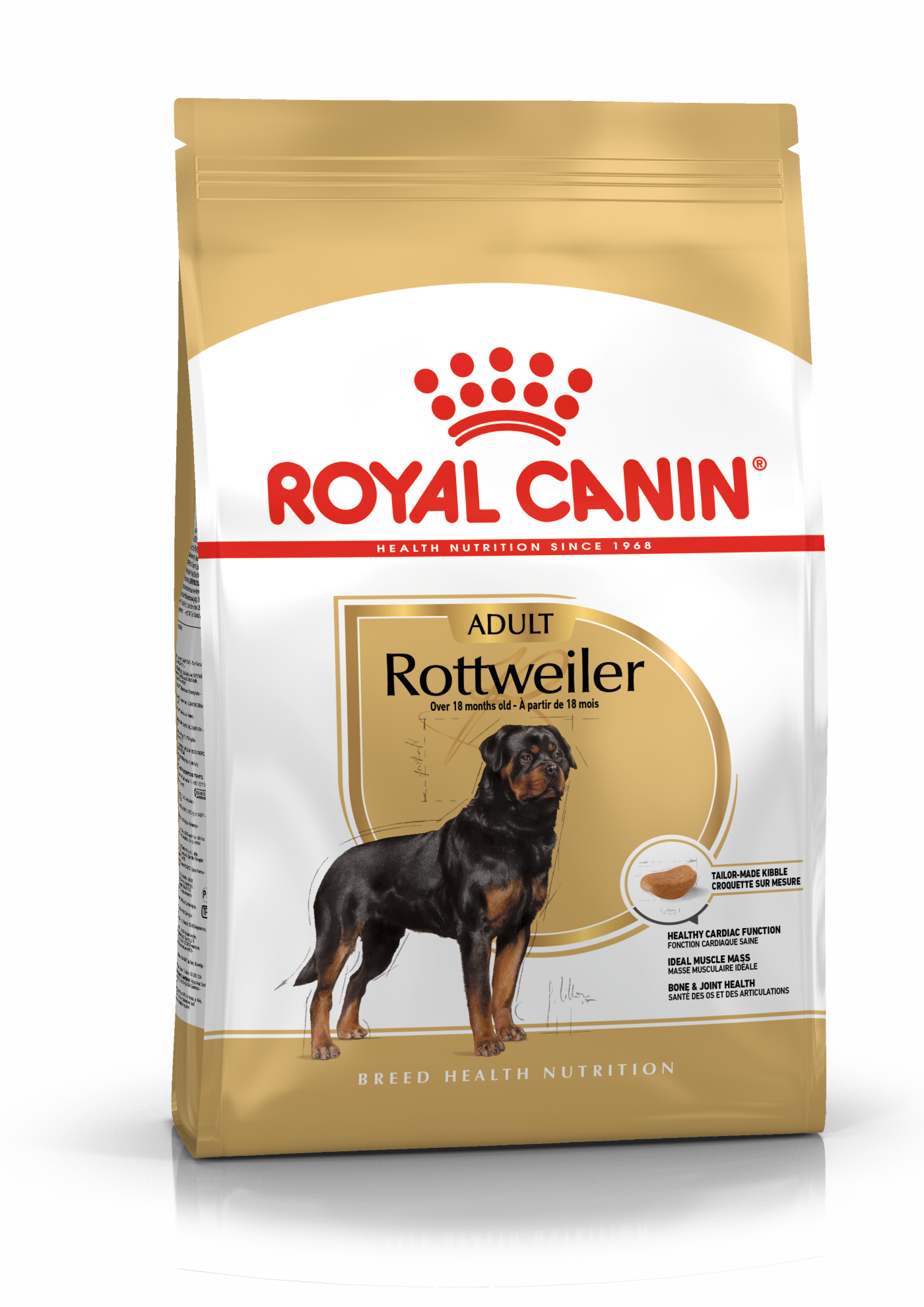
As with many giant-sized breed dogs, Rottweilers are prone to digestive sensitivity, and throughout their lifetime their body weight can create stress on the joints. Rottweilers’ nutritional needs then should include high-quality protein and a balanced supply of dietary fiber to help promote optimal digestibility, as well as glucosamine, chondroitin, and antioxidants to help support healthy bones and joints.
Healthy Cardiac Function
Rottweilers are prone to cardiac sensitivity. Our formula contains specific essential nutrients (taurine, EPA and DHA) to support cardiac function.
Ideal Muscle Mass
Naturally athletic, Rottweilers needs a high quality diet to support their muscular build. Rottweiler Adult helps maintain muscle mass with tailored levels of protein to meet their specific needs. The formula also contains L-carnitine.
Bone & Joint Health
Rottweilers are always active which puts its joints under strain. The formula is enriched with EPA and DHA to help support healthy bones and joints while helping to maintain the ideal weight.
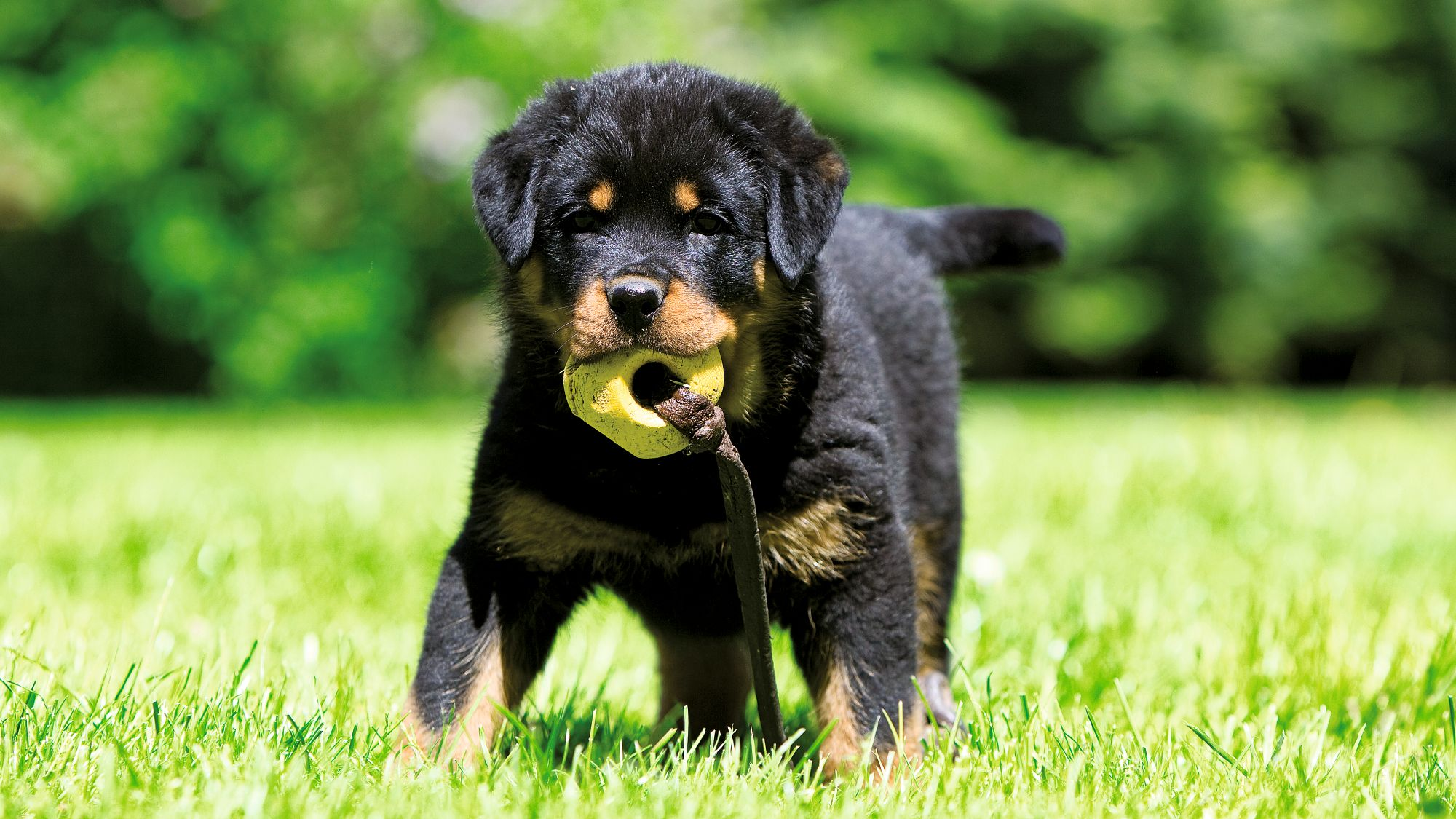
Caring for your Rottweiler
Grooming, training and exercise tips
Due to Rottweilers being highly muscular and athletic dogs, they need plenty of exercise and interaction to keep them in peak condition, both mentally and physically. To help burn off their excess energy, they will need at least two hours of exercise each day. Ideally, they will also benefit from a wide, secure space where they can charge around. As Rottweilers can be just as playful as puppies even into adulthood, they will appreciate games in the yard, too. They also enjoy swimming if there is a safe place for them to do so.
With their medium-length double coat, the Rottweiler requires weekly brushing to keep their fur in peak condition. For most of the year, molting is moderate – although it can be more noticeable in the Rottweiler’s seasonal shedding times in the spring and fall. Be prepared for some drooling, too. They will benefit from regular baths – though, given the size of the Rottweiler, many owners choose to book them in for professional grooming sessions. The Rottweiler’s nails should be trimmed as needed, ears checked regularly and teeth brushed as often as you can manage – at least two or three times a week but daily if possible. The key with this is to get them used to it when they’re young so they know that it’s nothing to fear.
With a kind but firm human, and the right training, the Rottweiler puppy will grow into a happy, confident adult. Also, as the Rottweiler has a naturally protective instinct, it’s important to socialize them early on so they’re at ease with other people and animals. They are a highly intelligent breed that learns quickly and will enjoy the mental stimulation of training classes. For best results, always use positive reinforcement and reward-based techniques.
Due to Rottweilers being highly muscular and athletic dogs, they need plenty of exercise and interaction to keep them in peak condition, both mentally and physically. To help burn off their excess energy, they will need at least two hours of exercise each day. Ideally, they will also benefit from a wide, secure space where they can charge around. As Rottweilers can be just as playful as puppies even into adulthood, they will appreciate games in the yard, too. They also enjoy swimming if there is a safe place for them to do so.
With their medium-length double coat, the Rottweiler requires weekly brushing to keep their fur in peak condition. For most of the year, molting is moderate – although it can be more noticeable in the Rottweiler’s seasonal shedding times in the spring and fall. Be prepared for some drooling, too. They will benefit from regular baths – though, given the size of the Rottweiler, many owners choose to book them in for professional grooming sessions. The Rottweiler’s nails should be trimmed as needed, ears checked regularly and teeth brushed as often as you can manage – at least two or three times a week but daily if possible. The key with this is to get them used to it when they’re young so they know that it’s nothing to fear.
With a kind but firm human, and the right training, the Rottweiler puppy will grow into a happy, confident adult. Also, as the Rottweiler has a naturally protective instinct, it’s important to socialize them early on so they’re at ease with other people and animals. They are a highly intelligent breed that learns quickly and will enjoy the mental stimulation of training classes. For best results, always use positive reinforcement and reward-based techniques.
7/7
Frequently asked questions about the Rottweiler
Although opinions can vary on this topic, female Rottweilers are generally viewed to be a little bit gentler and less boisterous than the males. But with the right training – and importantly the right owner – both genders can make devoted pets. Another, benefit of choosing a female is that they typically live a couple of years longer.
Rottweilers are more sensitive to weather extremes than you might expect. They do okay in winter weather but are still more sensitive to the cold than you might think despite their thick coat. They can also struggle in hot temperatures, therefore exercise should always be timed accordingly. When walking them in hot conditions access to shade and a regular supply of clean, fresh water is a must.
Other breeds that might interest you
Read more on this topic
Like & share this page